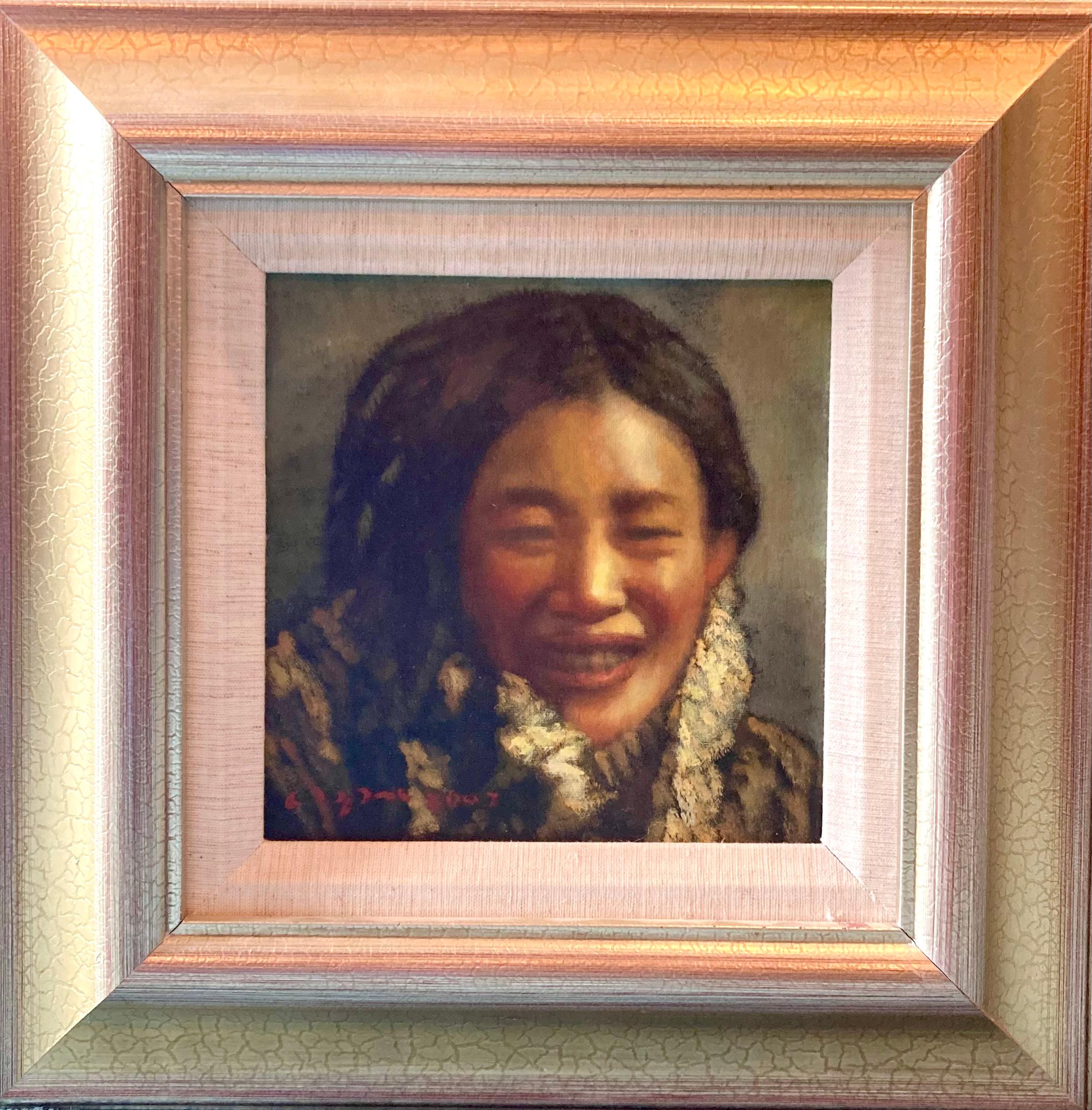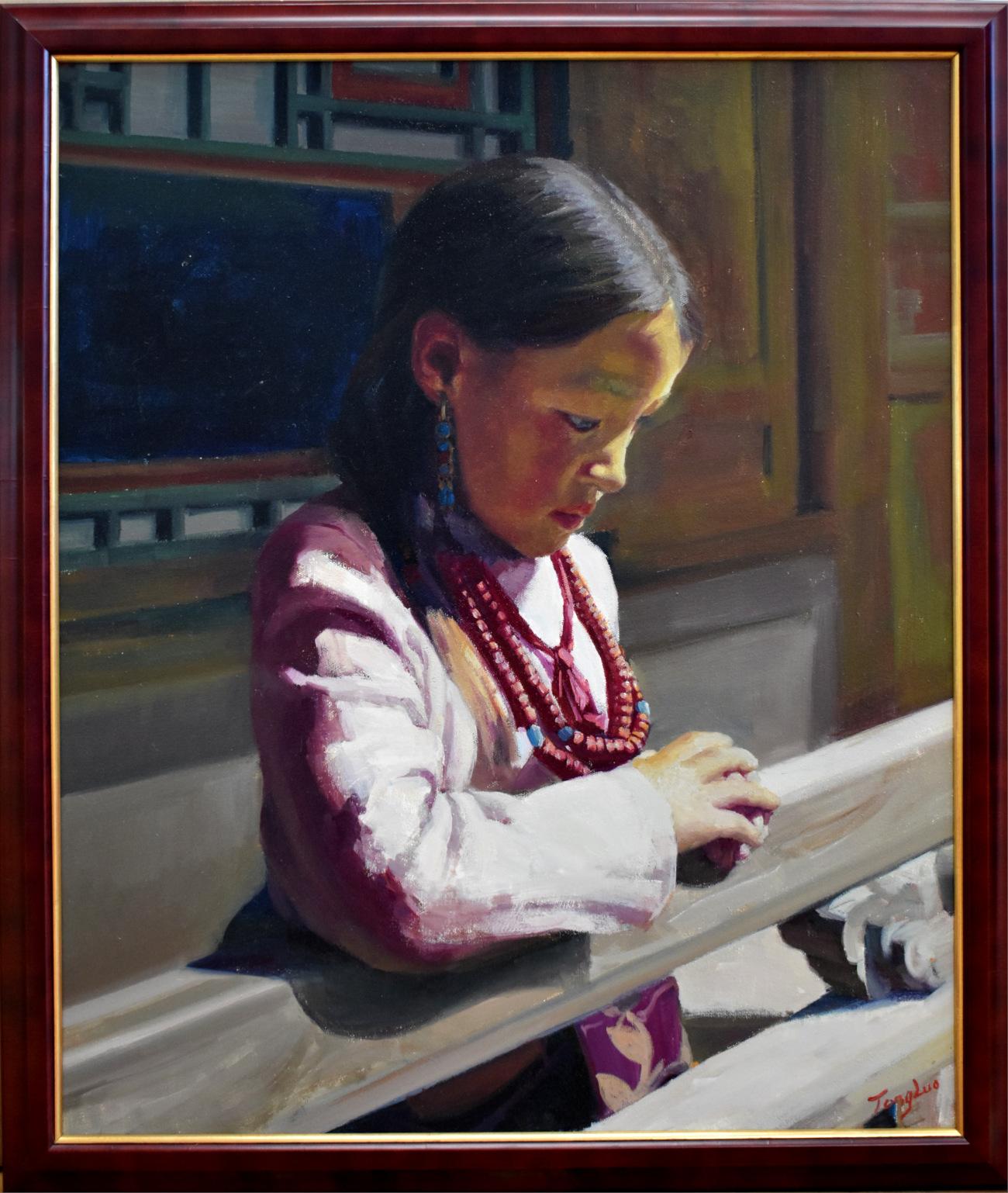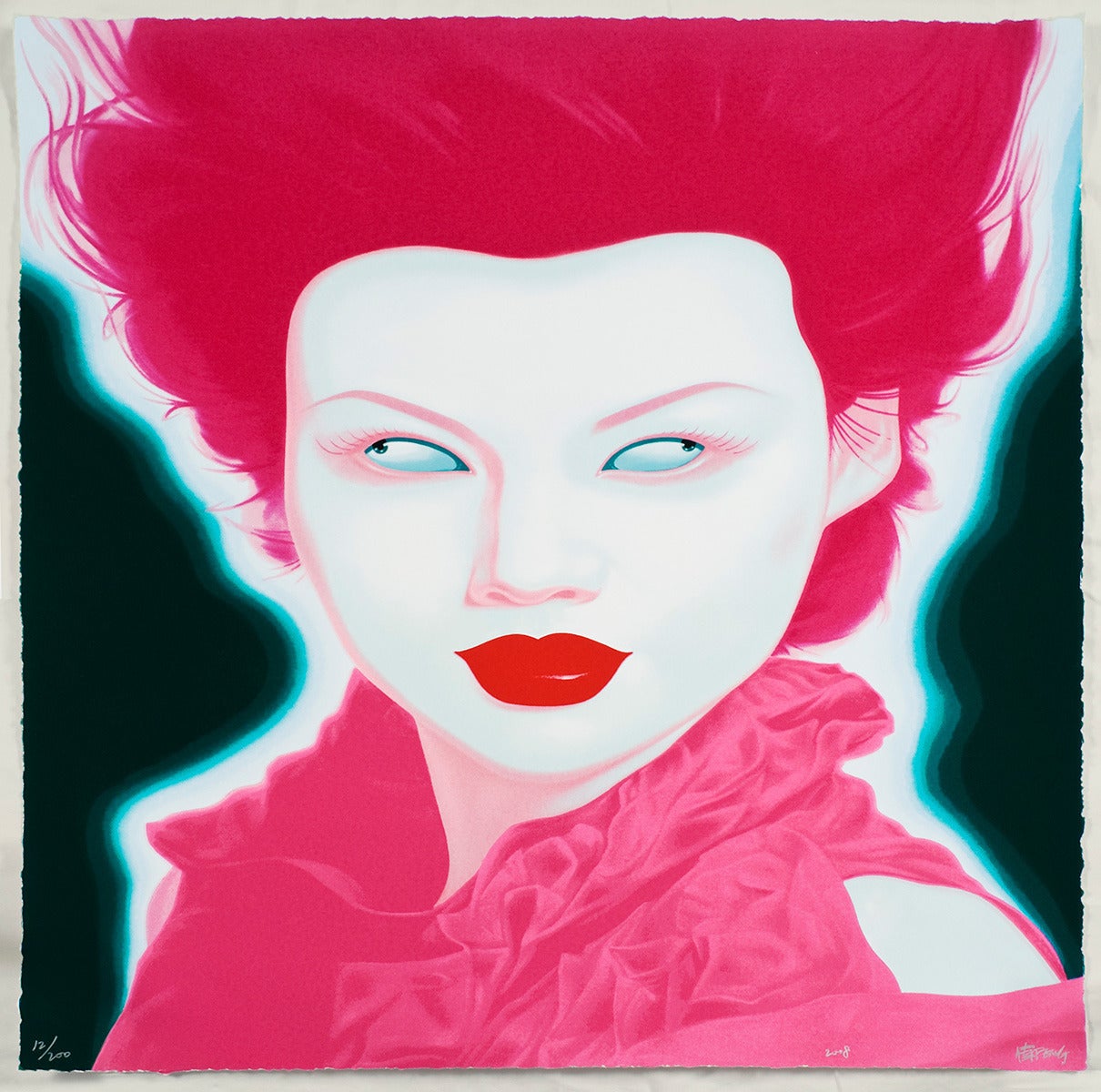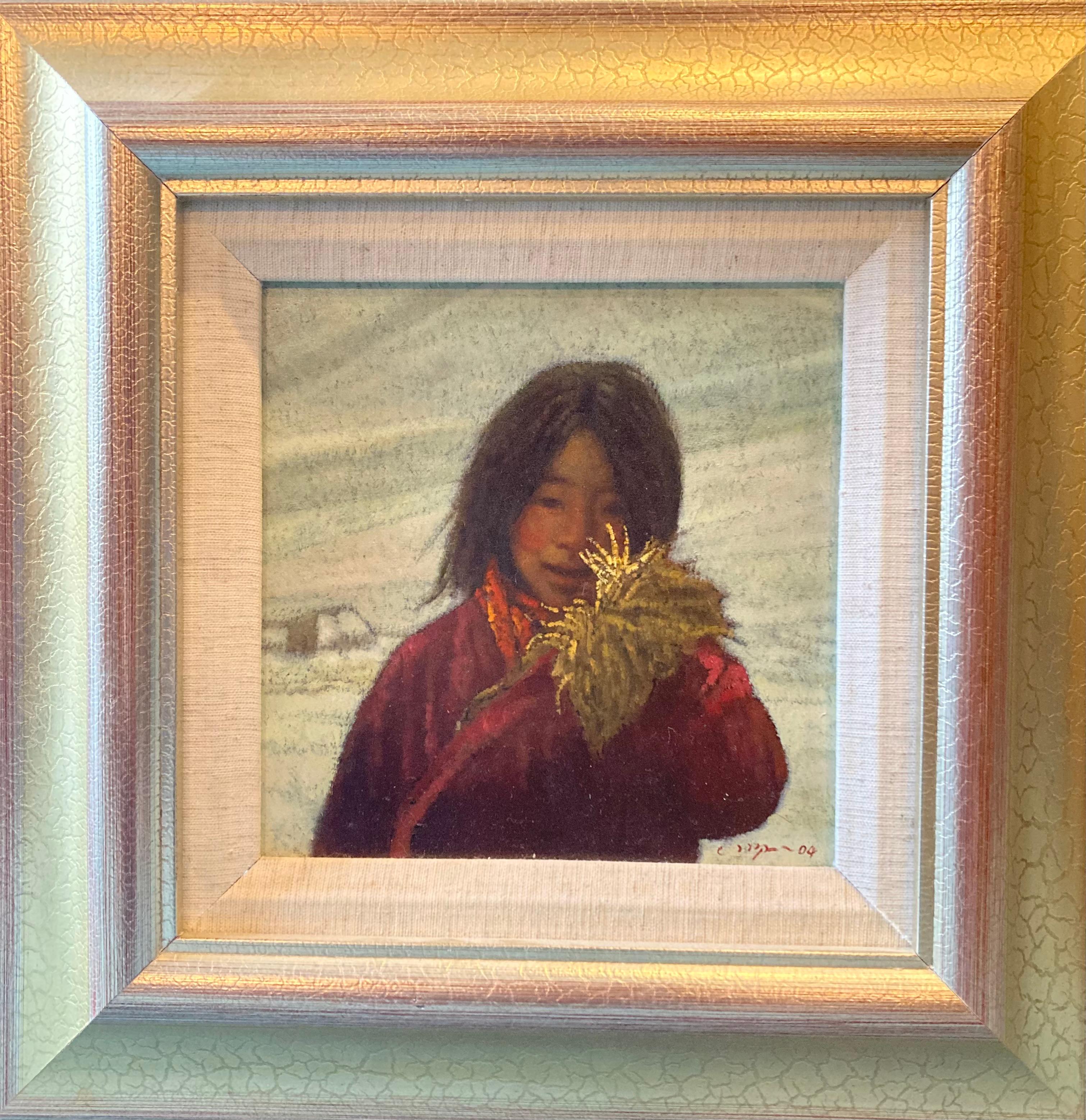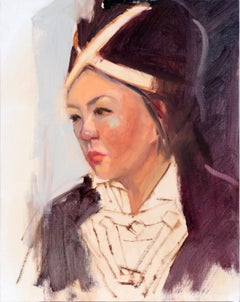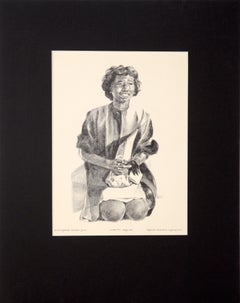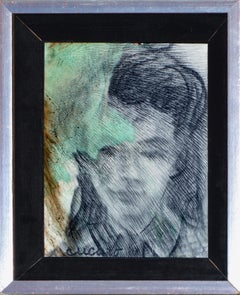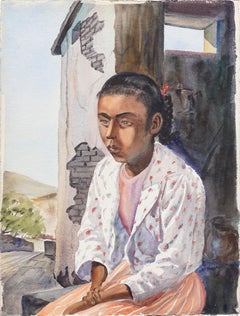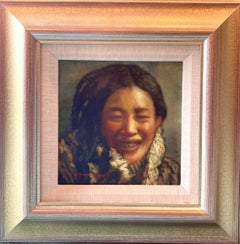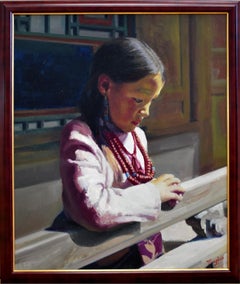Items Similar to Fang Fang -- The Artist's Daughter Portrait
Want more images or videos?
Request additional images or videos from the seller
1 of 11
Zhang BiaoFang Fang -- The Artist's Daughter Portrait2005
2005
$5,875
£4,482.48
€5,102.95
CA$8,257.38
A$9,076.87
CHF 4,765.31
MX$107,930.50
NOK 61,197.45
SEK 55,744.27
DKK 38,127.22
About the Item
Exceptional aquatint etching on paper by master print maker Zhang Biao. His daughter Fang Fang was published on a full page in the official catalog of the exhibition. This print received the outstanding prize of the 17th National Printmaking Exhibition - definitely one of the highest awards a printmaker can achieve in China. Signed Zhang Biao 2005 lower right with Chinese characters, title and name. Image, 32" x 20", sheet 47.5 x 37.75. (Overseas shipping, item will be rolled and shipped in a tube.) The artist no longer creates etchings and has moved to oils. A rare and exceptional Master print by a master.
In terms of composition, the picture passes Chinese tradition by with its concept of space. The sitting girl is realistically captured and skillfully placed in the space with attention to perspective. The spatial details are simply restricted to floor space, a nearly immaterial black wall behind the scene and a perspective chair construction. Nevertheless the artists succeeded in suggesting an accessible room in the picture. The light - coming from multiple sources - is not as natural, but rather a stylistic means to vividly and realistically model the girl.
The Aquatint Etching appeared in the official catalog of the 17th National Chinese Printmaking Exhibition in Guiyang. It is the most important exhibition of art prints in China. Only the very best artists and print works are selected out of thousands of prints submitted by hundreds of artists. The exhibition takes place about every two years, each time in a different city.
His daughter was the subject of many examples of the fine print making he produced. Zhang moved into painting in oils after a number of years making the existing examples of his printing skills rare. Without a doubt, printmaker Zhang Biao is one of the most successful artists in China. He has been recognized as the most important artist at national exhibitions and his work mirrors the latest development of the country. After leaving the traditional Chinese schools, he sought a new approach to Western, especially international art, without entirely giving up traditional values. This development can be seen in the two portraits of the artist's daughter, Fang Fang. Zhang Biao is booked out with many major national exhibitions. Fang Fang stands for a whole new generation of Chinese youths that was born during the period of the economic boom and whose education and life-style will be a mixture of Western culture and old Chinese traditions - comparable to the cultural mix in post-war Japan of the 1960s. One can see in Zhang Biao's first aquatint-etching portrait of his daughter that he was still much more closely connected with the Chinese tradition and style of portraits than his later works. Even though the daughter is presented in a natural and realistic picture, there are still strong ties to traditional Chinese notions of art.
The granularity of the surface is clearly recognizable and its form is reminiscent of a painting. But the portrait is close to the traditional Chinese portrait. The child sits in a stern posture with a serious expression, all of which is also felt in the picture's overall heavy note.
There are also Western qualities to be found in the pictures: most apparent is the expressive light-shadow model and the accurate depiction of crinkles in the clothing. For comparison, think about the stereotypical pictures from the Cultural Revolution. Then one will see and appreciate the distinct individualism that can be found in this pictures.
It does not show some standard girl in a school uniform, indistinct from all other girls. Rather Fang Fang is an individual with her own personal traits, including the large loving eyes. She is not staring. She is beholding her observer with curiosity. This different, although small, has a large effect on the overall tone of the picture.
- Creator:Zhang Biao (1971, Chinese)
- Creation Year:2005
- Dimensions:Height: 47.5 in (120.65 cm)Width: 37.75 in (95.89 cm)Depth: 0.33 in (8.39 mm)
- Medium:
- Movement & Style:
- Period:
- Condition:
- Gallery Location:Soquel, CA
- Reference Number:Seller: JS28881stDibs: LU542825953
About the Seller
5.0
Platinum Seller
Premium sellers with a 4.7+ rating and 24-hour response times
Established in 1986
1stDibs seller since 2014
3,062 sales on 1stDibs
Typical response time: <1 hour
- ShippingRetrieving quote...Shipping from: Soquel, CA
- Return Policy
More From This Seller
View AllPortrait of a Woman in Traditional Vietnamese Clothing in Oil on Canvas
Located in Soquel, CA
Portrait of a Woman in Traditional Vietnamese Clothing in Oil on Canvas
Modern impressionist portrait by an unknown artist (20th Century). A woman is wearing traditional clothing, most likely from the Nguyen Dynasty in Vietnam. She has a dark purple head covering...
Category
21st Century and Contemporary Impressionist Figurative Paintings
Materials
Canvas, Oil
$440 Sale Price
20% Off
"Birmingham School Girl" - Rare Signed Figurative Lithograph in Ink on Paper
Located in Soquel, CA
"Birmingham School Girl" - Rare Signed Figurative Lithograph in Ink on Paper
Bold lithograph by Eugene Hawkins (American, b. 1933). Rendered in a semi-abstracted style, a young, black school girl is distressed and crying on her knees with her books and lunch in hand.
Titled, numbered, dated, and signed along the bottom edge: "Birmingham school girl litho #4 May 1963 Eugene Hawkins, Legend 412"
Presented in a new black mat.
Mat size: 18"H x 14"W
Image size: 11.25"H x 8.75"W
Eugene Hawkins (American, b. 1933) is a BIPOC artist...
Category
1960s American Modern Figurative Prints
Materials
Paper, Ink, Lithograph
Mid-Century Portrait of a Young Girl
By Pascal Cucaro, 1915-2003
Located in Soquel, CA
A gentle mid-century portrait of a young girl by Pascal "Pablo" Cucaro (American, 1915-2004). Sealed in a layer of clear resin. Signed in a black textured medium, lower left: "cucaro...
Category
1950s American Impressionist Figurative Paintings
Materials
Canvas, Resin, Carbon Pencil, Acrylic
$719 Sale Price
20% Off
Mid Century Portrait of a Young Mexican Girl
By Joseph Yeager
Located in Soquel, CA
Watercolor portrait of a young Mexican girl by Joseph Yeager (American, 20th Century). Signed "Joe Yeager" in the lower right corner. This piece is on hea...
Category
1960s American Impressionist Figurative Drawings and Watercolors
Materials
Paper, Watercolor
$1,080 Sale Price
20% Off
Vintage Etching Abstracted Portrait of Amazing Grace
By Claudette McElroy
Located in Soquel, CA
Bold, slightly abstracted etching of an elderly woman titled "Amazing Grace" by Claudette McElroy (American, b. 1943). Signed on verso "Claudette McElroy" in the lower right corner, ...
Category
Late 20th Century Contemporary Portrait Prints
Materials
Paper, Ink, Etching
$680 Sale Price
20% Off
Portrait of a Young Girl
By Richard Dooner
Located in Soquel, CA
Silver Bromide photographic portrait of a young girl by Philadelphia photographer, Richard T. Dooner (American, 1878-1954). A fine portrait of...
Category
Early 20th Century Photorealist Figurative Photography
Materials
Ink, Photographic Paper
$388 Sale Price
20% Off
You May Also Like
Little Chinese Girl
By Ming Wai
Located in San Francisco, CA
This artwork "Little Chinese Girl" 1982 in a color off set lithograph by renown Chinese/American artist Wai Ming A.K.A Lo Hing Kwok, b.1938. It is hand signed an inscribed A.C (Hors Commerce) in pencil by the artist. The image size is 24.5 x 22 inches, sheet size is 28 x 24.5 inches. It is in excellent condition, has never been framed.
About the artist:
Wai Ming, was born in Canton, South China on November 11, 1938, the son of a school master with nine children. Extremely poor as a child, he was raised in Hong Kong enduring many hardships amidst a chaotic environment of war and refugee settlements. Wai Ming's love for art flourished and he developed his drawing techniques without any art education, just painting what he saw. In the 1960s, Ming found representation in Hong Kong and also took the unusual step of opening his own gallery to display his work in. His primary interest being to capture images of life in fishing villages, or 'fish-folk', who have retained traditional Chinese culture, his work was at home with the sensibilities of many art buyers in Hong Kong. Crossing the ocean in his mid-30s, Wai Ming arrived in San Francisco from Hong Kong in 1974. There, he experienced initial resistance from galleries and the official art world for a variety of reasons, but was ultimately embraced by dealer Jack Swanson...
Category
Late 20th Century Realist Figurative Prints
Materials
Lithograph
"Girl Portrait"
Located in Warren, NJ
Zheng Zhiyue Original Oil painting on canvas
measures 15x15
in excellent condition
made in 2004
Category
Early 2000s Paintings
Materials
Canvas
"Girl In Thought" Young Chinese Girl
By Tong Luo
Located in San Antonio, TX
Lou Tong
Image Size: 24 x 20
Frame Size: 26.5 x 22.5
Medium: Oil
"Girl In Thought"
Biography
Tong Luo was born in Huai Yang, County of Henan Province, China, in 1969. He learned h...
Category
21st Century and Contemporary Realist Figurative Paintings
Materials
Oil
Girl of Tang Dynasty, Abstract Psychedelic Screenprint by Tiefeng Jiang
By Tiefeng Jiang
Located in Long Island City, NY
Artist: Tiefeng Jiang, Chinese (1938 - )
Title: Girl of Tang Dynasty
Year: 1986
Medium: Screenprint, signed and numbered in pencil
Edition: 283/300
Image Size: 35.5 x 36.5 inches
Siz...
Category
1980s Contemporary Figurative Prints
Materials
Screen
Chinese Portrait Series No. 38
By Feng Zhengjie
Located in New York, NY
Feng Zhengjie is clearly one of the most important Chinese contemporary artists working today. While the subjects are not always feminine, it is these portraits of the supremely self...
Category
21st Century and Contemporary Figurative Prints
Materials
Archival Ink
"Portrait of Girl"
Located in Warren, NJ
Zheng Zhiyue
Oil Painting on Canvas
In good condition
Measures 15x15x1
Category
Early 2000s Paintings
Materials
Canvas
More Ways To Browse
Salvador Dali Medusa
Salvador Dali Sa
Salvador Dali Signed Etching El Cid
Salvador Dali The Businessman
Salvador Dali The Mystic Ladder
Santos Chavez
Saul Steinberg Mouton Rothschild Wine Label
Sempe Print
Serigraphs By Tarkay
Shane Turner
Shannon Cartier Lucy
Shannon Lucy
Shepard Fairey Dark Wave
Shepard Fairey Kiss Me Deadly
Shepard Fairey Skateboard
Siemen Dijkstra
Signed Fernando Botero
Signed Picasso Poster
